We already have the first two fireballs of this brand new 2019. First one on the first night of the year, above Balearic Islands, and another one on the January 2nd crossing Granada (Andalucía, South Spain) skies.
The one on January 1st occurred at 5:02 UT, and could be registered with the SMART Project's detectors operated at Calar Alto (Almería) and La Hita (Toledo) observatories and also with Calar Alto Observatory external surveillance webcam. The second one happened at 01:48 UT, was registered with the external surveillance webcam located at Calar Alto Observatory (Almería) and with SMART Project's detectors at Sevilla and La Sagra (Granada) observatories.
 Following the preliminary analysis carried out by Professor José María Madiedo (University of Huelva), SMART Project's PI, the fireball of January 1st was caused by a rock detached from an asteroid which hit our atmosphere at a speed of about 216.000 km/h. The luminous phenomena started at an altitude of 120 km and finished at an altitude of 50 km.
Following the preliminary analysis carried out by Professor José María Madiedo (University of Huelva), SMART Project's PI, the fireball of January 1st was caused by a rock detached from an asteroid which hit our atmosphere at a speed of about 216.000 km/h. The luminous phenomena started at an altitude of 120 km and finished at an altitude of 50 km.
As the left image shows, this event happened on the skies of Balearic Islands, far away from where it was registered with both SMART detectors and surveillance webcams. This is again a good demonstration of the impressive transparency of the skies of Calar Alto Observatory, similar to what happened with the last fireball registered on 2018, which took place on the Navarra (North Spain) skies.
Below are the videos registered with both SMART detector and external surveillance webcam, both operated at Calar Alto Observatory (Almería).
 Concerning the fireball on January 2nd 2019, at 01:48 UT, and as the analysis achieved by Professor Madiedo states, corresponds with an asteroidal event which had a speed of 54.000 km/h. The fireball started at an altitude of 87 km above Granada province (Andalucía - South Spain) and then moved southeastward towards Mediterranean Sea where it finished at an altitude of 50 km, just in front of Granada coast. The right image shows the path this object followed above the ground.
Concerning the fireball on January 2nd 2019, at 01:48 UT, and as the analysis achieved by Professor Madiedo states, corresponds with an asteroidal event which had a speed of 54.000 km/h. The fireball started at an altitude of 87 km above Granada province (Andalucía - South Spain) and then moved southeastward towards Mediterranean Sea where it finished at an altitude of 50 km, just in front of Granada coast. The right image shows the path this object followed above the ground.
Although this object happened much closer to Calar Alto Observatory than the one on the first day of this year, it was less spectacular and only colud be registered with the surveillance webcam operated at Calar Alto, but not with the SMART detectors as it occurred in a dead angle of those detectors.
Below is shown the video from the Calar Alto Observatory external surveillance webcam.
Calar Alto (CAHA) fireball detection station, together with the one at the Observatory of Sierra Nevada (IAA-CSIC) and others placed at different locations in Spain, are part of the S.M.A.R.T. project led by Professor José María Madiedo (University of Huelva) to track that kind of objects. Specifically, Calar Alto (CAHA) station and the one at Sierra Nevada (IAA-CSIC) constitute a collaboration agreement between Professor Madiedo and both institutions.
 English (UK)
English (UK)
